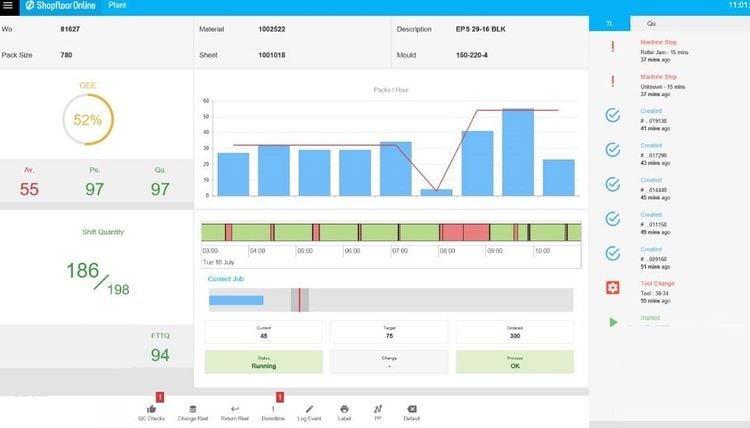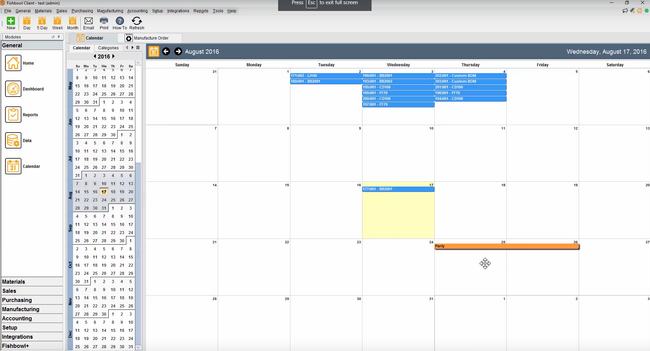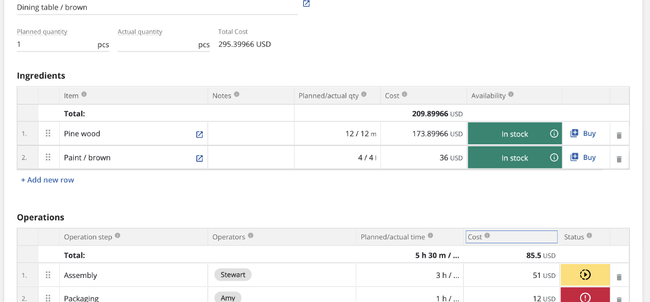Using our in-depth software review method, we’ve identified and ranked the best production tracking software available today. Here are our top picks based on factors like value for money, performance, integration options, and key features like resource management and scheduling tools.
- Fishbowl Inventory: Best Overall
- BatchMaster ERP: Great for Process Manufacturing
- Katana Manufacturing ERP: Best for SMBs
- MRPEasy- Most User-Friendly Option
- FactoryFour: Most Customizable
- HYDRA X: Advanced Tech Integrations
- Q-INMASS: Advanced Inventory Module
- Smart Manager MOM/MES: Best for Large-Scale Manufacturing Operations
- MachineMetrics: Best for OEE
1 Fishbowl Inventory - Best Overall
Why we chose it: Fishbowl Inventory is our top pick because of its detailed part and product tracking. Users can easily add details like SKU or price. They can also choose the best tracking method and import data from spreadsheets for batch processing. Additionally, Fishbowl automatically generates serial numbers and offers lot number and expiration date fields. It even includes unlimited custom fields, enhancing the granularity and flexibility of tracking. Last, Fishbowl integrates with QuickBooks to help balance books after sales and adjust accounts following inventory audits.
2 BatchMaster ERP - Great for Process Manufacturing
Why we chose it: BatchMaster ERP is our pick for process manufacturers because it excels in batch processing. It enables dynamic formula adjustment to meet specific physical or nutritional characteristics. It also automatically creates, links, and schedules dependent batch jobs. Finally, BatchMaster ERP includes QMS capabilities ranging from inspection plans and checklists to nonconformance and CAPA.
3 Katana Manufacturing ERP - Best for SMBs
Why we chose it: We went with Katana Manufacturing ERP because it’s a decent choice for small to medium-sized manufacturers. It has affordable and transparent pricing, making it more accessible for SMBs with limited budgets. At the same time, it delivers a dense feature set, including real-time master planning, shop floor control, end-to-end traceability, and more. Last, we appreciate that it integrates with popular platforms many SMBs already use; Shopify, WooCommerce, Xero, and QuickBooks Online all integrate with Katana.
4 MRPEasy- Most User-Friendly Option
Why we chose it: MRPEasy delivers a user-centric interface and intuitive design, lowering the learning curve for new users. For example, the platform consolidates multiple functions into a single screen. Receiving and purchasing tasks are all integrated into one purchasing section, making it easier to manage processes without navigating multiple screens. In addition, MRPeasy delivers multilingual support and responsive customer service, supporting users in international markets in their preferred languages.
5 FactoryFour - Most Customizable
Why we chose it: FactoryFour is our most customizable pick because it allows users to tailor workflows to their specific production processes. It also allows them to personalize dashboards and analytics reports. Additionally, employees can view work orders by task, work center, product type, status, and operator. Last, FactoryFour’s public API allows manufacturers to customize the software easily and build integrations with existing systems.
6 HYDRA X - Advanced Tech Integrations
Why we chose it: HYDRA X MES includes an AI suite, offering artificial intelligence “out of the box.” The platform can leverage AI algorithms to analyze data, predict maintenance needs, and optimize production schedules. HYDRA X also delivers IoT capabilities, connecting with various manufacturing devices and sensors. This connectivity enables tracking orders, machines, tools, quality, materials, and labor in real-time and historically. In other words, HYDRA X is a decent option for companies looking to leverage modern tech in their production tracking operations.
7 Q-INMASS - Advanced Inventory Module
Why we chose it: Q-INMASS is one of our top picks because it offers strong inventory control through multi-warehouse management. It effectively manages stock levels, tracks inter-location transfers, and optimizes inventory at each site. The software excels in batch and serial number tracking, an essential feature for pharmaceuticals, food and beverage, and electronics industries. Finally, its integration of barcode scanning and RFID technology enhances the efficiency of inventory tracking processes.
8 Smart Manager MOM/MES - Best for Large-Scale Manufacturing Operations
Why we chose it: Smart Manager MOM/MES can efficiently handle a high volume of data and scale with the complex processes typical of enterprise-level manufacturers. It has advanced scheduling and capacity planning. The system can optimize resource utilization across multiple production lines and shifts. This includes managing complex job queues, predicting bottlenecks, and balancing workloads to maximize throughput.
8 MachineMetrics - Best for OEE
Why we chose it: MachineMetrics is a highly effective production tracking software, particularly for manufacturing companies looking to leverage IoT technology for enhanced productivity. The platform provides real-time production visibility and seamless integration with ERP and MES systems.
MachineMetrics features machine downtime tracking, real-time factory floor dashboards, operator view tablets, alerts, notifications, and detailed analytics. These all enhance its suitability for modern manufacturing environments. Other strength lies in its ability to offer customized dashboards for monitoring manufacturing assets and its capability for predictive maintenance by monitoring equipment health.
What is Production Tracking Software?
Production tracking software makes planning and assigning manufacturing tasks easier based on real-time data. Often part of manufacturing solution, it provides suppliers with tools designed to provide regular updates on the manufacturing lifecycle so you can stay informed about any changes in the production schedule. The process begins with the order submission until the finished product is distributed to its end location.
Similar to manufacturing resource planning (MRP), tracking solutions help you manage resources, update your supply chain partners, and stay ahead of demand. Keep a real-time overview of every work order using production tracking software.
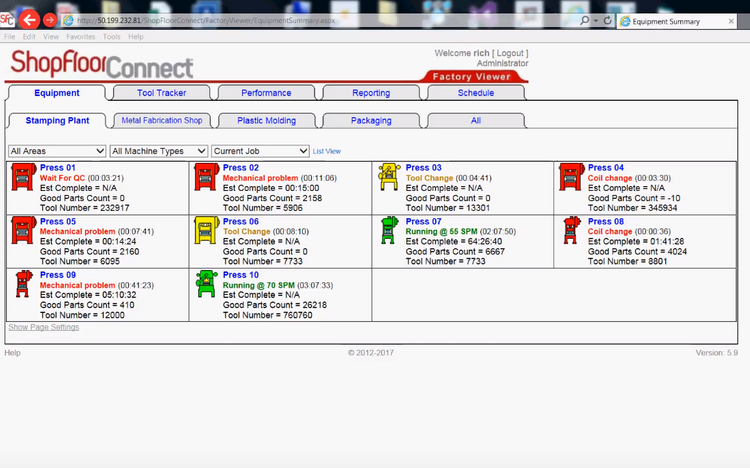
[How to Choose Software]] Recommendations for Choosing the Best Production Tracking Software
1 Assess Your Manufacturing Needs
- Feature Set: List specific needs such as inventory management, real-time tracking, quality control, and compliance management. Determine whether the software needs to cater to small-, medium-, or large-scale manufacturing.
- Process Compatibility: Assess the complexity of your manufacturing processes, including the number of products, variants, and production steps. Ensure the software supports your specific operations, like batch processing, continuous flow, or job shop.
- Regulatory Compliance: The software should facilitate compliance with industry-specific regulations (e.g., FDA for pharmaceuticals, ISO standards for manufacturing).
2 Define Functional Requirements
- Process Customization: Determine the level of customization required to match your specific manufacturing operations.
- Scalable Solutions: Ensure the software can scale up as your operations grow in complexity and volume.
- Integrations: Evaluate how the software will integrate with your current systems, like ERP, CRM, or SCM software.
3 Technology Integration
- Machine and IoT Integration: Assess the software’s ability to integrate with machinery and IoT devices for automated data collection and machine monitoring.
- Advanced Technologies: Consider how the software incorporates advanced technologies like AI, machine learning, and predictive analytics for process optimization.
4 Reporting and Analytics
- Custom Reporting: The software should offer customizable reporting features tailored to manufacturing metrics and KPIs.
- Predictive Maintenance: Evaluate if the software can analyze data to predict equipment failures and schedule maintenance proactively.
5 Material and Supply Chain Management
- Supply Chain Integration: The software should integrate seamlessly with supply chain management, especially for just-in-time (JIT) manufacturing models.
- Material Requirements Planning (MRP): Evaluate the software’s capabilities in MRP to ensure efficient material utilization and minimize waste.
6 Quality Control and Assurance
- In-Process Quality Checks: The software should facilitate real-time quality checks during the manufacturing process.
- Traceability: Ensure the software offers traceability for raw materials and finished products, which is crucial for quality assurance and recall management.
What Are the Key Features of Production Tracking Software?
- Resource Management: Determine how to best source and use raw materials for production.
- Scheduling: Arrange timelines for project orders based on material and staff availability. Set milestones, benchmarks, due dates, and deadlines based on the work order.
- Share Production Updates: Provide production schedule updates to partners along the supply chain.
- Coordinate Team Communication: Manage digital and in-person communications between your team members to reduce downtime.
- Job Costing: Stay within budget by getting regular updates on orders and all associated job costs.
- Inventory Traceability: As orders are completed, use barcodes or RFID systems to improve inventory management.
- Warehouse Optimization Tools: If you store finished orders at a warehouse before they go to a distribution center, you can organize your space to maximize storage.
- KPI Data Collection: Set your key performance indicators (KPIs) to ensure you meet your production goals.
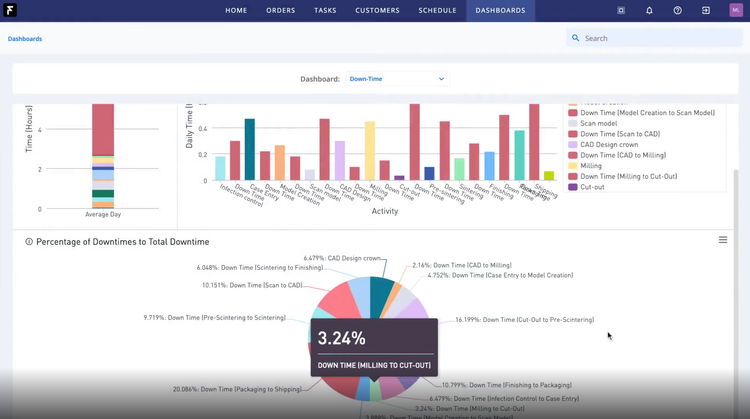
What Are the Benefits of Production Tracking?
There are many benefits to using production tracking software at your workplace. These are just a few:
Real-Time Production Updates
The best benefit of production tracking is how it can provide real-time updates on the manufacturing lifecycle. You can access the workings of your entire shop floor from one convenient software package. See if everything is moving smoothly or if there are production issues.
Real-time shop floor data shows you all possible causes of manufacturing delays. Is a piece of equipment out of commission? Are holidays causing worker shortages? Account for these delays by adjusting your production schedule.
If you have multiple production lines working at once, production tracking will help you manage all of them.
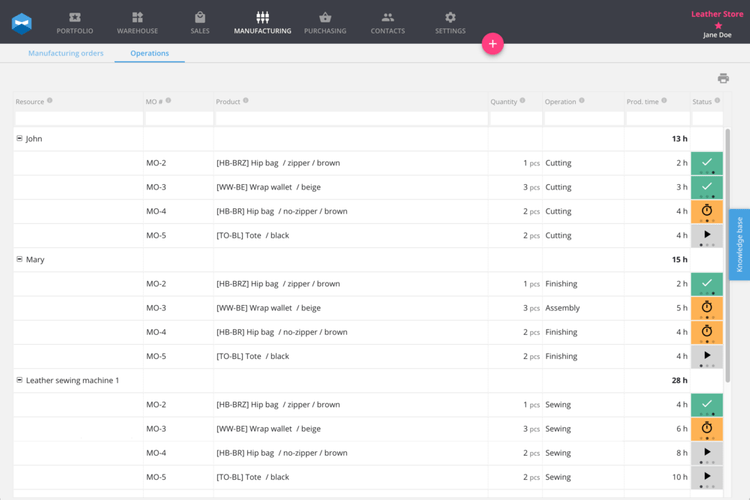
Better Manage Resources
A significant source of loss for producers is outdated manufacturing processes that waste time, money, or both. As you track your production processes, you may find opportunities to use your current resources better. This may vary from sourcing raw materials to scheduling your workers.
Prioritize your resources so you can focus on the orders that matter most. Enterprise resource planning (ERP) software and MRP systems help you optimize the manufacturing process so you get the most value out of each material. You can drastically reduce your bill of materials by using tracking software.
Set Realistic Minimums
You can track your team’s daily, weekly, or monthly minimum goals by monitoring production. When you get real-time data, you can compare it against your projected results to see if you will meet those goals. If you fall behind, you can adjust your production planning to compensate.
Another way to set accurate production benchmarks is by collecting historical data. Based on this information, anticipate seasonal slowdowns and other annual manufacturing trends by adjusting your production targets. Even better, the longer you’ve been manufacturing, the more production data you’ll have to use!
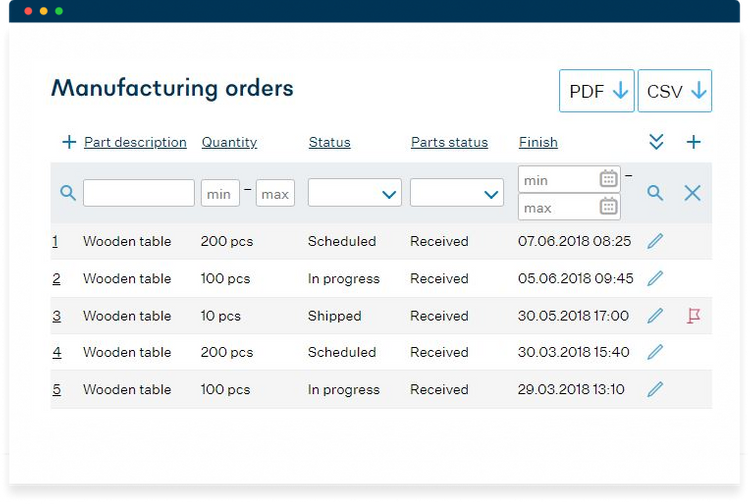
Anticipate Supply Chain Demands
Want to increase productivity? Streamline the production process by using tracking software from start to finish. Once you have a handle on the production process, you can increase or decrease output to better suit capacity.
When working along the supply chain, you might get requests from retailers for more inventory based on forecasting data. Get ahead of your retail partners by planning out your production in advance.
Additionally, there are a lot of potential delays which can occur in the supply chain. Anything from severe weather to holidays can bring production to a halt. While some delays are unexpected, you can account for others by planning.
Provide Quality Assurance
Overall equipment effectiveness (OEE) depends on several factors, including part quality. Accurate production tracking tools let you find potential shortcomings and vulnerabilities within the production process. Quality management is necessary to avoid production errors which may lead to costly recalls. Check over WIP products to ensure they meet all your quality standards at every stage of the manufacturing process.
Whether from barcodes or other systems, traceability automates tracking at an individual or batch level. If defects are found within one lot, you can begin recall procedures for the rest of the affected products.
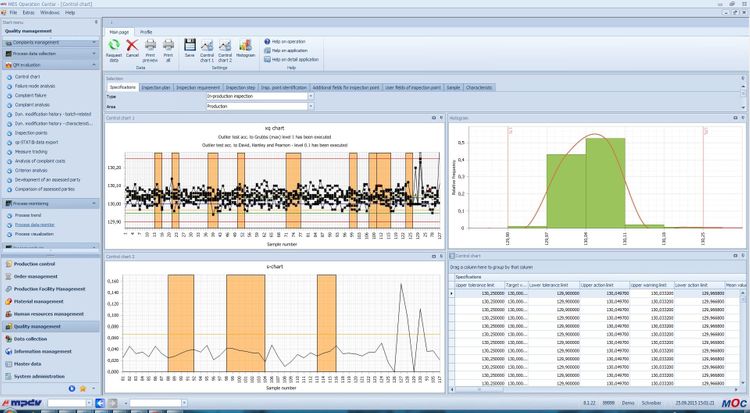
How is Production Tracking Different from Scheduling?
Production tracking has some similarities with production scheduling. However, while both are recommended for streamlined production, they serve distinct purposes. For starters, production scheduling software focuses on generating the timeline necessary for getting resources, staffing, and inventory in production. Production tracking is about comparing this schedule to reality to ensure you are on time throughout the manufacturing lifecycle.
Production tracking primarily measures overall equipment effectiveness (OEE), giving you more control over manufacturing quality, performance, and availability.
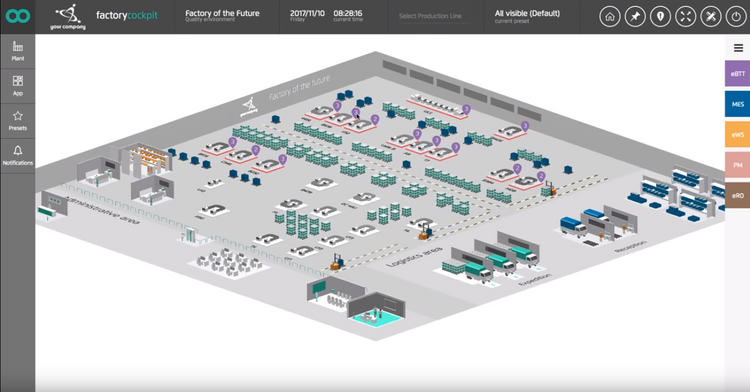
Medical Device Compliance Tracking
In the United States, medical devices must be tracked through the manufacturing process, per the Food and Drug Administration (FDA). Production tracking software gives you the tools for staying compliant with medical requirements. The FDA requires tracking for any device that may cause health consequences in the event of device failure. This includes:
- Pacemakers
- Defibrillators
- Heart valves
- Prostheses and implants
- Ventilators and monitors
How Much Does Production Tracking Software Cost?
Production tracking software prices depend on whether you have a single manufacturing plant or multiple manufacturing facilities. One-time perpetual license solutions start at $2,000 and increase to $50,000. Software-as-a-service (Saas) prices begin at $48 per month per user and go up to $899 per month.
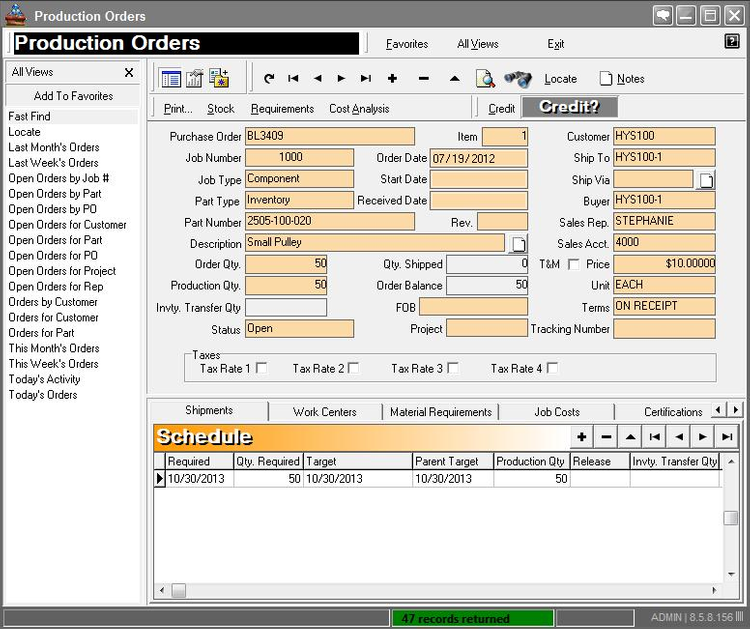
How to Avoid Production Tracking Pain Points
Without production tracking, you may encounter the following problems:
Higher Bill of Material Costs
You might miss out on more effective practices if you haven’t updated your production methods in years. You’ll be stuck with a higher bill of material cost if you’re wasting raw resources. Lower your overall operating costs by using ERP modules of production tracking to find opportunities to save money along the manufacturing lifecycle.
Product Shortfalls
Shortfalls occur whenever you’re not meeting retailer demand. Don’t let down your supply chain partners. Use production tracking to stay on top of your work orders and anticipate demand.
Slower Manufacturing
Related to the above, outdated manufacturing may slow your production capabilities. You don’t want to fall behind your competitors. Use production tracking and scheduling tools to increase your production capacity.
